
Today’s Supreme Court decision may determine the next president of the United States. But William Rehnquist, the Chief Justice of the court— tasked with determining whose ballots will count and be counted— has a history of racism and excluding people of color from voting. [includes rush transcript]
In 1964, Rehnquist demonstrated his segregationist sentiments when he fought the passage of a Phoenix ordinance permitting Blacks to enter stores and restaurants.
Between 1958 and 1962, when Rehnquist was a private attorney in Arizona, he served as the director of Republican “ballot security” operations in poor neighborhoods in Phoenix. Rehnquist was part of Operation Eagle Eye, a flying squad of GOP lawyers that swept through polling places in minority-dominated districts to challenge the right of African Americans and Latinos to vote. At the time, Democratic poll watchers had to physically push Rehnquist out of the polling place to stop him from interfering with voting rights.
Two decades later, during Rehnquist’s 1986 Senate confirmation hearing for appointment to head the Supreme Court, he denied targeting minority voters. Some election watchers, who had personally observed Rehnquist’s tactics in Phoenix, accused him of lying to Congress.
The Senate went on to confirm him, but the 65-33 vote marked the largest negative tally ever received by someone confirmed to be chief justice. Today, we have two people who were in Phoenix in the 1960s and confronted now Chief Justice Rehnquist for his blatantly anti-democratic actions.
Guests:
- Lou Meyer, Director of Pennsylvania Institute of Community Services who was a poll watcher in Arizona and witnessed Rehnquist harassing black voters.
- Manuel Pena, recently retired 30-year veteran of the Arizona legislature who was a poll watcher in 1962 and witnessed Rehnquist harassing voters.
Transcript
AMY GOODMAN: Today’s Supreme Court decision may determine the next president of the United States. But William Rehnquist, the Chief Justice of the court, tasked with determining whose ballots will count and be counted, has a history of racism and excluding people of color from voting.
In 1964, Rehnquist demonstrated his segregationist sentiments when he fought passage of a Phoenix ordinance permitting Blacks to enter stores and restaurants.
Between 1958 and 1962, when Rehnquist was a private attorney in Arizona, he served as the director of Republican “ballot security” operations in poor neighborhoods in Phoenix. Rehnquist was part of Operation Eagle Eye, a flying squad of GOP lawyers that swept through polling places in minority-dominated districts to challenge the right of African Americans and Latinos to vote. At the time, Democratic poll watchers had to physically push Rehnquist out of a polling place, they say, to stop him from interfering with voting rights. Rehnquist denies these charges.
Two decades later, during Rehnquist’s 1986 Senate confirmation hearing for appointment to head the Supreme Court, he denied targeting minority voters. Some election watchers who had personally observed Rehnquist’s tactics in Phoenix accuse him of lying to Congress.
The Senate went on to confirm him, but the 65-33 vote marked the largest negative tally ever received by someone confirmed to be chief justice.
Today, we are joined by two people who were in Phoenix in the 1960s and confronted now-Chief Justice Rehnquist for his actions. We’re going to go first to Manuel Pena, who recently retired from the Arizona legislature. I spoke with him late yesterday. He was very reluctant to talk on tape, but finally he agreed to talk about his experiences with Rehnquist thirty — well, more than thirty years ago.
MANUEL PENA: I’m Manuel Pena. And I was a district chairman for the Democratic Party, also a precinct committeeman. And I was a volunteer poll watcher for the party during that election.
AMY GOODMAN: And can you tell us about Operation Eagle Eye?
MANUEL PENA: Well, it was a Republican operation, where they intended, and did for a while, stall voters from voting. They stopped them by challenging voters and not allowing people to go in and vote.
AMY GOODMAN: How did they do that?
MANUEL PENA: Well, in Arizona, the parties are allowed to challenge a voter based on registration, residence, anything that makes people eligible to vote, age, stuff like that. And so — but they were using — they were asking questions like, you know, how long have you lived there and why do you live there, why did you move there.
AMY GOODMAN: And who were they asking?
MANUEL PENA: Who were they asking? Democrats, mostly — as a matter of fact, they — it all happened in precincts predominate minority, black and Hispanic. And so they were asking — and Democrats [inaudible] great majority of Democrats. And so they were asking those questions of those people.
AMY GOODMAN: Did the Republicans call it Operation Eagle Eye?
MANUEL PENA: Yeah.
AMY GOODMAN: And what was Rehnquist’s involvement in this?
MANUEL PENA: Well, as I understand from testimony later on is that he’s the one that put it together.
AMY GOODMAN: What was his position?
MANUEL PENA: He was an attorney in town for the Republican Party and probably — well, he was a challenger for the Republicans.
AMY GOODMAN: Did he personally stop people from voting?
MANUEL PENA: You know, when you challenge people and you keep them from voting, because they have to answer questions, I would say yes, that they were stopped. But I need to point out that he’s not the only one that was doing it. There were about ten precincts involved.
AMY GOODMAN: You testified at Rehnquist’s confirmation hearing?
MANUEL PENA: Yes.
AMY GOODMAN: You mentioned that you had Rehnquist personally pushed out of a polling place. What happened?
MANUEL PENA: Well, when he wouldn’t leave, you know, I asked him to stop doing that. And when he wouldn’t leave, then I went out and called for some volunteers that we had available for that purpose. One of them came in, and I pointed out to him where Rehnquist was and what he was doing. So he went in and took him out. He pushed him out.
AMY GOODMAN: Now, Rehnquist has said while he was part of that effort, he never actually challenged anyone’s right to vote. But you’re saying that’s not true.
MANUEL PENA: Yeah.
AMY GOODMAN: What are your thoughts about Chief Justice Rehnquist being chief justice?
MANUEL PENA: Well, I think I made that pretty clear when I testified against him. And I haven’t changed my opinion.
AMY GOODMAN: I mean, you’re saying something very significant. You’re saying that when Rehnquist said he personally was not involved with challenging voters at the polls, you’re saying that he committed perjury before Congress.
MANUEL PENA: Well, that’s possible.
AMY GOODMAN: What kinds of questions did Rehnquist and the others ask people at the polls?
MANUEL PENA: Well, I don’t — they’re totally unrelated to the limits that are put on the challenger to do the challenging. You’re limited to, you know, are you registered to vote? Is your residence at this address that’s on, you know — they all have a book in front of them with everybody’s name and address. And so they can challenge them. And if you have moved from that address, then you’re not eligible to vote. And so, challengers are within their right to make that kind of a challenge.
AMY GOODMAN: How do you know it was blacks and Latinos who were most challenged?
MANUEL PENA: I live here. I live in South Phoenix. I was there.
AMY GOODMAN: And you saw Rehnquist stopping blacks and Hispanics?
MANUEL PENA: Mostly Hispanic and black. I mean, they didn’t go up north in Paradise Valley and stuff like that to challenge.
AMY GOODMAN: Who lives in Paradise Valley?
MANUEL PENA: All of the wealthy people, mostly wealthy.
AMY GOODMAN: What color are they?
MANUEL PENA: Is white a color?
AMY GOODMAN: Well, the Democratic and Republican Senate found his answers satisfactory. I suppose that he denied this. What do you think about that?
MANUEL PENA: Well, I think they were wrong. Like I said, even my United States senator at that time supported Rehnquist’s nomination. And I think he was wrong.
AMY GOODMAN: Who was your senator?
MANUEL PENA: At the time, it was a fellow by the name of Dennis DeConcini.
AMY GOODMAN: Do you think Rehnquist is impartial when it comes to people’s right to vote, who gets to vote and who doesn’t?
MANUEL PENA: Well, he demonstrated here in Arizona that he was biased. I mean, you don’t go around challenging people just because they’re minorities or even just because they’re Democrats and minorities and then stall them from voting and try to discourage people from voting. You’re not supposed to do that.
AMY GOODMAN: Manuel Pena, recently retired from the Arizona legislature, where he had served as a state senator and before that a representative for more than twenty years.
We are also joined on the telephone by Lou Meyer who is Director of Pennsylvania Institute of Community Services, who also at the time in the early 1960s was a poll watcher in Phoenix, Arizona. Welcome to Democracy Now!, Lou Meyer.
LOU MEYER: Good morning. Thank you.
AMY GOODMAN: Well, these are very serious charges that Manuel Pena has made. And again, I want to reiterate that Rehnquist denies that he was personally involved, which would discount the whole story of Manuel Pena. Reading from an Arizona Republic piece, it says, “In 1962, Republican activist William Rehnquist was the leader of Operation Eagle Eye, a flying squad of GOP lawyers that swept through polling places in South Phoenix to question the right of some minority voters to cast their ballots. Less than a decade later, when Rehnquist testified at a US Senate hearing on his appointment to the Supreme Court, his memory of his role in those events had grown dim. At a second hearing in 1986, when Rehnquist was asked more detailed questions about the operation, he’d lost virtually all recollection of his [vote] in it. But he did repeat his assertion that he never directly challenged any South Phoenix voter at the polls.” That’s not what Manuel Pena says.
LOU MEYER: That’s correct.
AMY GOODMAN: Tell us what this Operation Eagle Eye, how it got started.
LOU MEYER: Well, my understanding, I was very involved in the Democratic Party registration drive in 1964, as well as the Get Out the Vote drive. And in 1962, Operation Eagle Eye had operated in the mainly Afro-American and Latino precincts of Phoenix. And we simply decided in 1964, when we saw the opportunity of winning the election, that — pardon me — that we were going to be prepared for it. And we had poll watchers in those precincts, which were predominately Democratic, that were predominately Latino and African American. The purpose of our having poll watchers there was to discourage the Operation Eagle Eye operatives from doing the kind of slowdowns that they were — that they had done in 1962, and we knew that they were going to do it in 1964, to prevent that kind of slowdown and give people an opportunity to vote.
The whole purpose of Operation Eagle Eye was to disrupt voting lines. And as I think Manuel Pena has said, they would ask all kinds of questions, which were not a part of what we call the legal right to challenge at a polling place. There was an understanding that they could certainly question a person if they had reasonable assumptions that the person had not lived in the district for thirty days, if the person could not read a part of the Constitution of the United States. These were considered acceptable legal challenges. However, I would also add that the common feeling was that if you were going to challenge a person when it came to reading the Constitution, you did it at the time that the person registered to vote, not when they got into the voting line, and use that simply as a means of disrupting the voting patterns. So Operation Eagle Eye was simply an effort on the part of the Republican Party to discourage Democrats, particularly in the minority areas, from being able to vote.
AMY GOODMAN: And your thoughts on Rehnquist denying his personal involvement, though he had headed up Operation Eagle Eye, the story that Manuel Pena told of having him thrown out of a polling place.
LOU MEYER: Well, I was involved in several polling places, where the lines were being disrupted. And Lito, as we call him, Lito and I were in contact during the day. And he told me personally that he had gone into, I believe it was Bethune Precinct, that he had gone into Bethune Precinct and found Rehnquist challenging voters.
Now, Rehnquist has — yes, he has denied that he ever did it. But I think that Rehnquist, being one of the key people in leading up Operation Eagle Eye, certainly had a challenger’s designation. And I suppose the question that would have to be raised is, if he was a challenger, did he in effect challenge anybody. Lito says he saw him challenging. I certainly, being involved in that as long as I was, I have no reason to disbelieve what Lito has said. And I said it back in 1986 when he went down to Washington to testify, that I felt the same way.
I was in a couple of the other precincts and had to call in some of the folks that we had put together to stop this kind of action. I wasn’t right at the same precinct with Senator Pena, but our discussion about it afterwards left no doubt in my mind that Rehnquist was a part of the challenging operation.
AMY GOODMAN: Well, I want to thank you very much, Lou Meyers, for being with us. Again, Lou Meyers, one of those poll watchers in the early '60s in Phoenix, Arizona. Finally, your comment on Chief Justice William Rehnquist heading the court that could well decide the next president of the United States, based on whose vote gets counted and whose doesn't.
LOU MEYER: Well, it seems to me, even though many years have passed since Rehnquist’s anti-civil rights activities in Phoenix during the 1960s that there’s ample reason to question his objectivity in the Florida election issues, particularly when serious questions have been raised regarding ballots in the Afro-American and the Hispanic precincts, as well as among Haitians and the Afro-American college students at Cookman-Bethune College. Certainly Rehnquist’s actions over a span of a number of years in Phoenix does not speak well, in my mind, for a person charged with upholding all of the laws, including those protecting the civil rights of our citizens.
AMY GOODMAN: Lou Meyers, thanks for joining us.

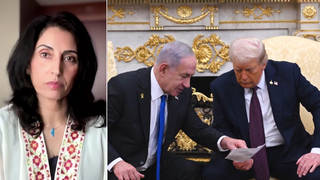

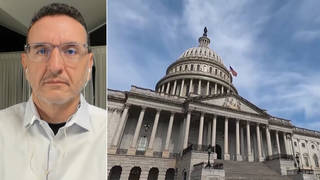
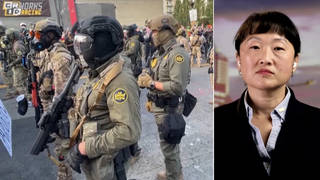


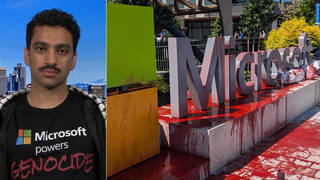
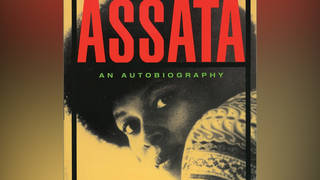

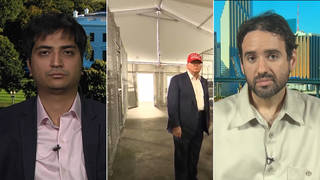
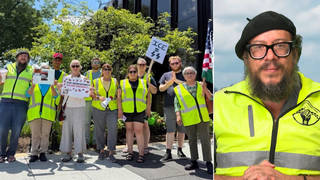
Media Options